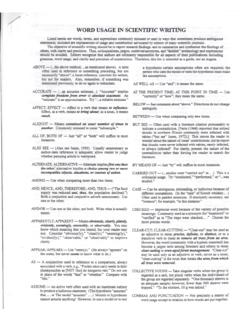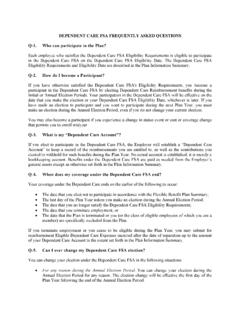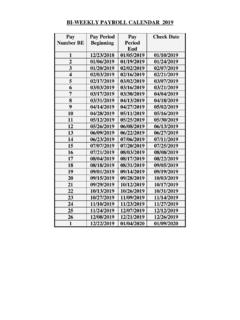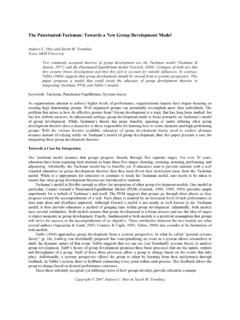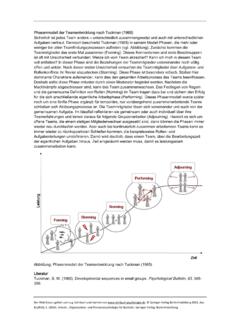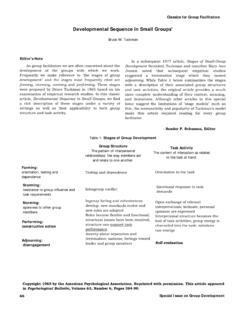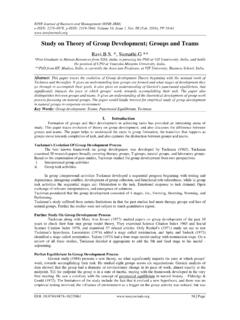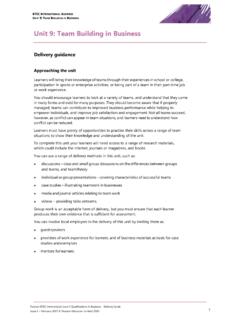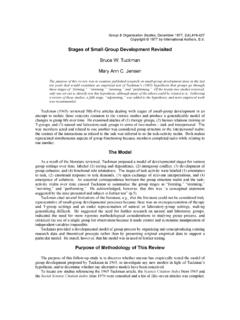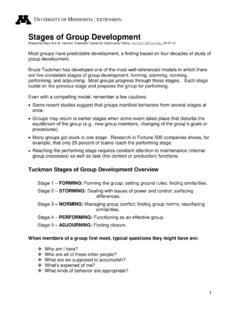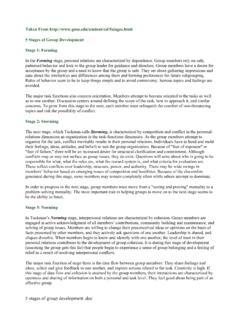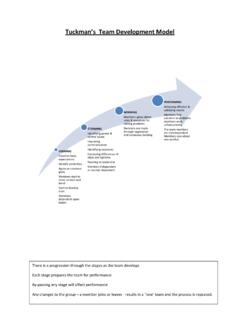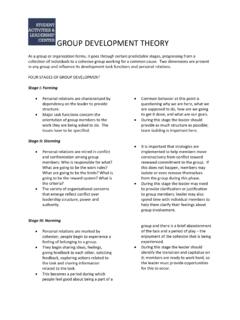Transcription of Collaborative Learning Techniques - Bates College
1 Collaborative Learning Techniques Competitive Learning No interaction between students Not accountable to others Responsible only to self Homogeneous grouping, if any One student serves as leader Social skills assumed or ignored Collaborative Learning Active interaction with others Accountable to others Responsible to the group Heterogeneous grouping Positive interdependency Social skills taught directly Collaborative Learning METHODS help students learn how to work effectively as a team but they must be taught! Psychologist Bruce tuckman first came up with forming, storming, norming and performing back in 1965 to describe the path that most teams follow.
2 tuckman s Model: For Collaborative Learning to work, instructors need to guide every transition. Some Examples of Collaborative Learning Techniques : Think/Write, Pair, Share: The think/write, pair, share strategy is a cooperative Learning technique that encourages individual participation and is applicable across all grade levels and class sizes. Students think through questions using three distinct steps: 1. Think/Write: Students think independently about a question that has been posed, forming ideas of their own and write them down. 2. Pair: Students are grouped in pairs to discuss their thoughts. This step allows students to articulate their ideas and to consider those of others. 3. Share: Student pairs share their ideas with a larger group, such as the whole class.
3 Often, students are more comfortable presenting ideas to a group with the support of a partner. In addition, students' ideas have become more refined through this three-step process. Round Table: Round Table is a Collaborative Learning technique that allows students to assess prior knowledge, recall information and practice communication skills. The steps are: 1. Write: Each student writes one (or two or 3) sentences about a given topic (or this could be an answer to a question) on a piece of paper. 2. Share: The paper is passed around to one group member at a time. Each group member responds in writing. 3. Summarize: When the original is returned, the student reads the comments from the group and shares what the collective sense of what was said in the group about the topic (or question).
4 Jigsaw: Jigsaw is a Collaborative Learning technique that gives students practice in the acquisition and presentation of new material, in review, and in informed debate. Interdependence and status equalization are developed. The method is: 1. Each student on the team becomes an expert on one topic 2. Experts group with members from other teams assigned the corresponding expert topic. 3. Upon returning to their teams, each one, in turn, teaches the group. 4. Students are all assessed on all aspects of the topic. Concept Mapping: Concept mapping is a Collaborative Learning technique that allows students working in groups a way of illustrating the connections that exist between terms or concepts covered in course material.
5 The method is: 1. Students write terms from the course on a large piece of paper 2. Lines are drawn connecting individual terms to indicate the relationships between terms. Most of the terms in a concept map have multiple connections. 3. Developing a concept map requires the students to identify and organize information and to establish meaningful relationships between the pieces of information.


